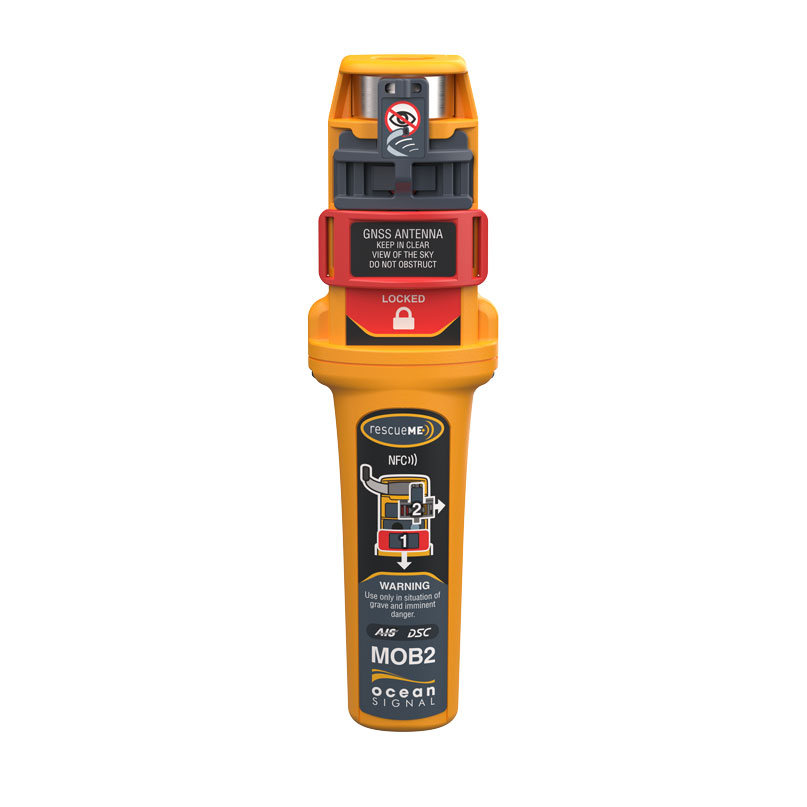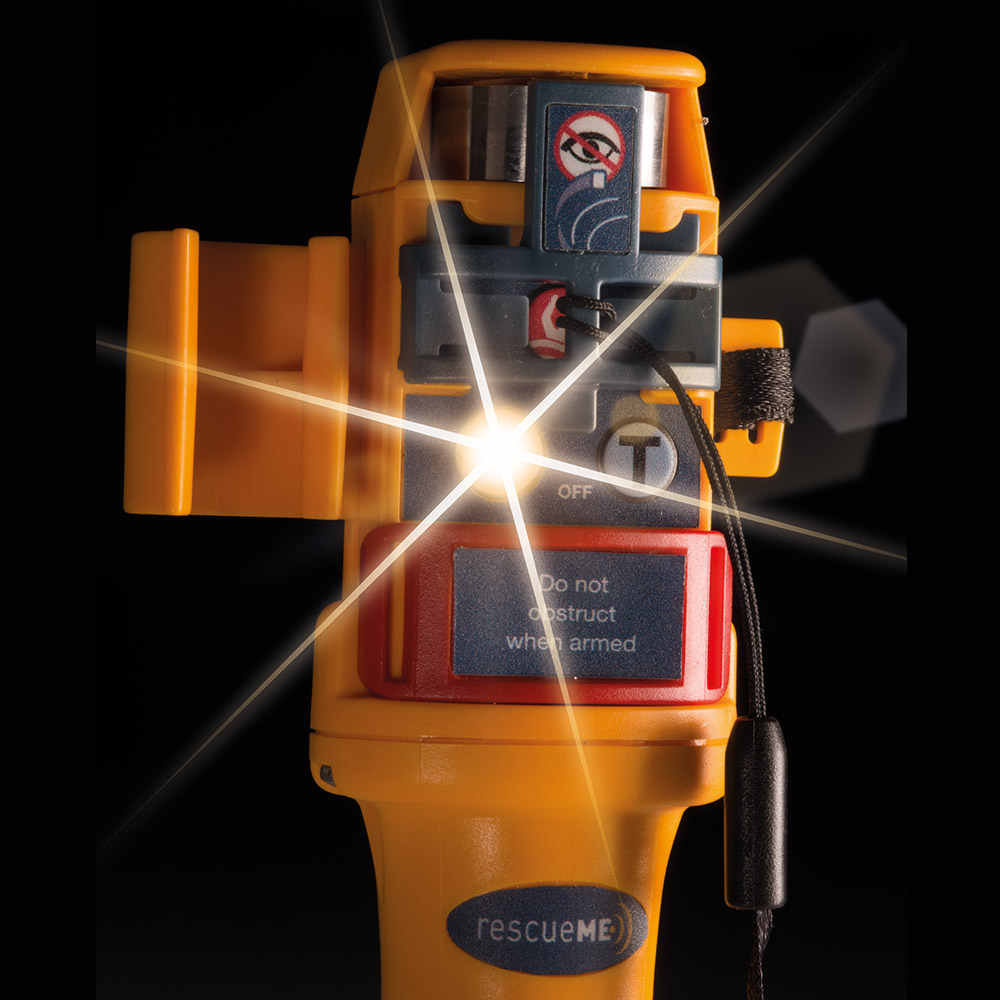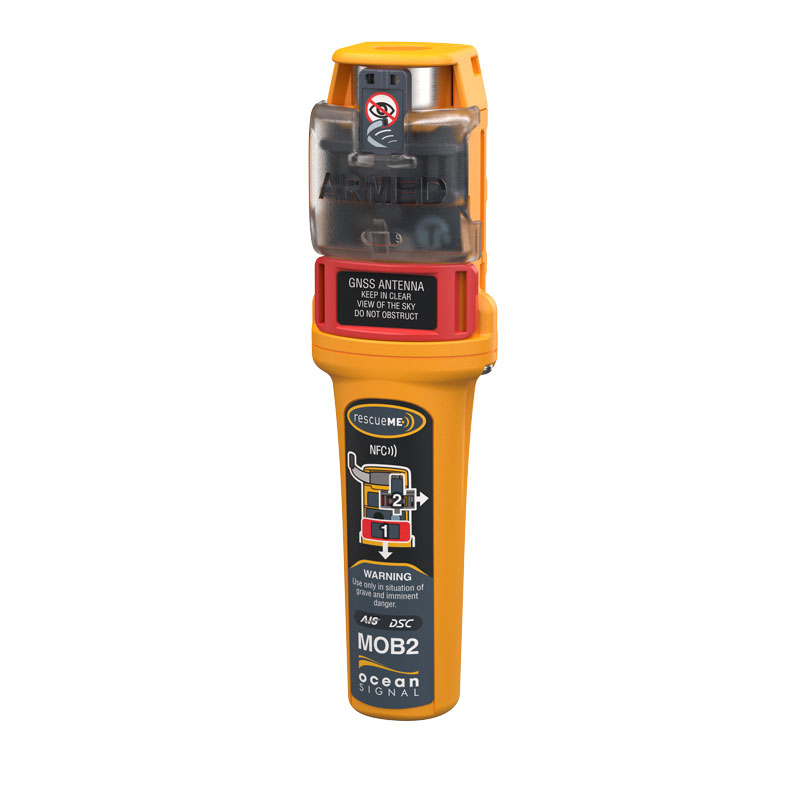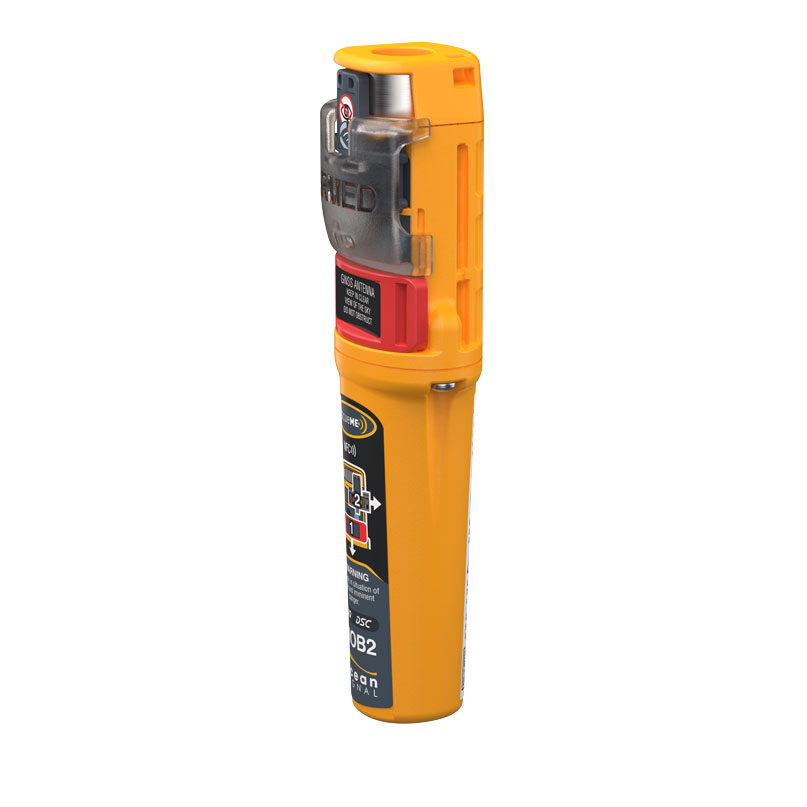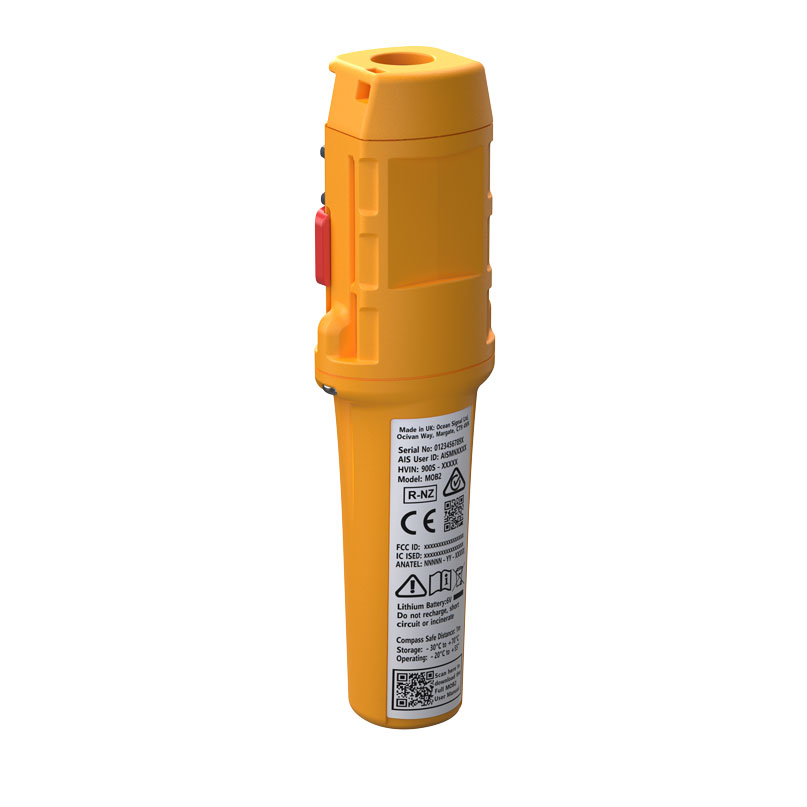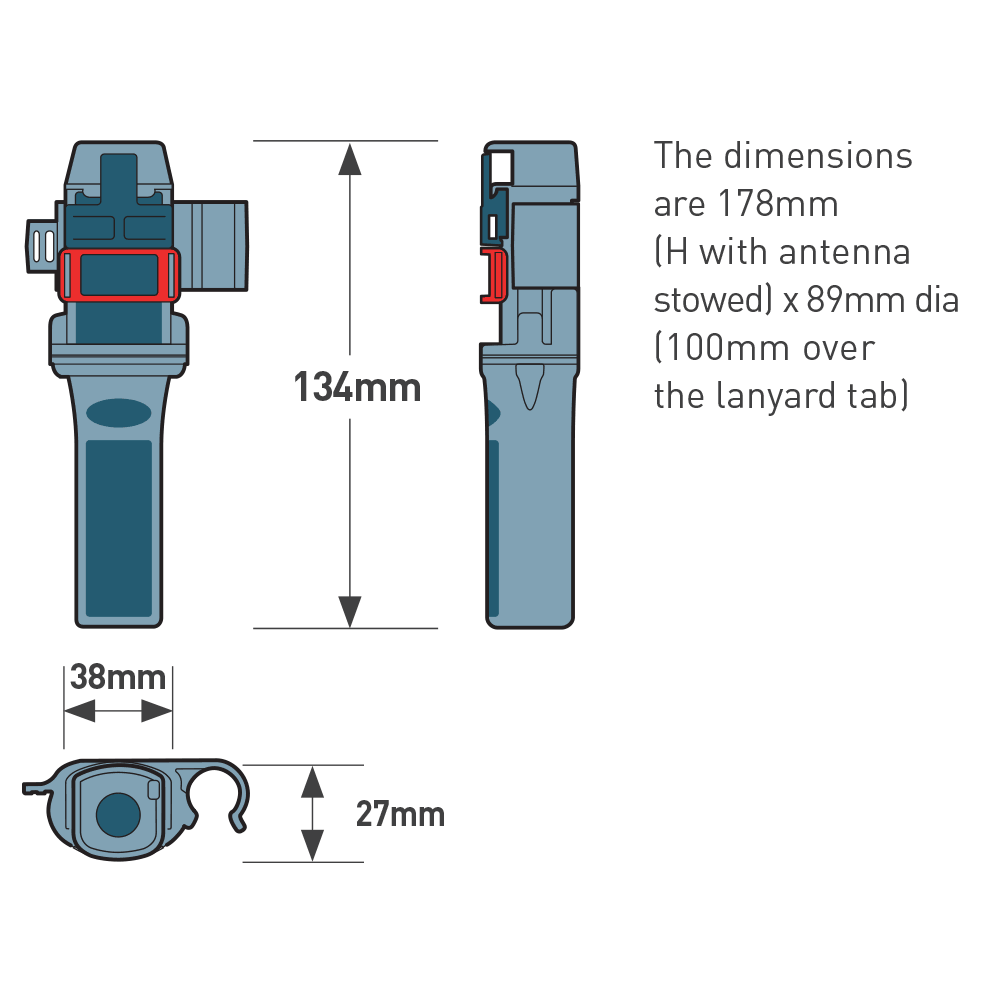Ocean Signal RescueMe MOB2 AIS/DSC Beacon
£ 319.95
This item is currently unavailable to purchase.
Want to be notified when this product is back in stock?
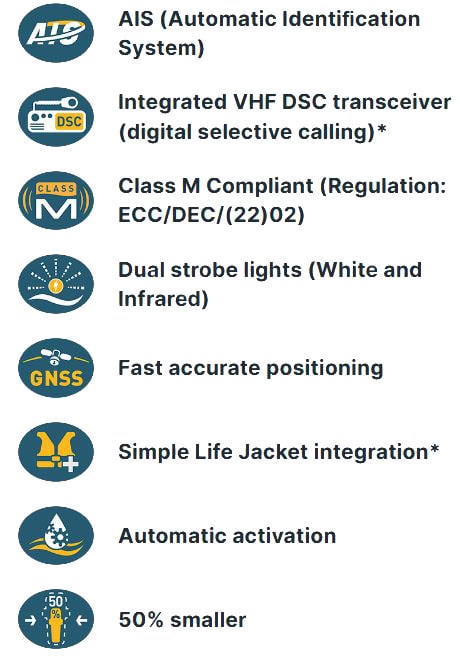
Introducing the world’s smallest AIS Man Overboard (MOB) device with integrated VHF DSC – the rescueME MOB2 AIS from Ocean Signal. This vital component of any maritime safety kit is designed for rapid response in man-overboard emergencies. Compact and lightweight, the MOB2 integrates seamlessly with even the most compact inflatable lifejackets, ensuring automatic activation upon inflation.
The MOB2 sends the first alert within 15 seconds, broadcasting your precise location using AIS technology to nearby vessels and onboard navigation systems. It communicates with the vessel you’ve been separated from and other vessels up to 5 miles away, depending on conditions. Additionally, nearby vessels are instantly notified of the man-overboard situation through DSC technology.
In an emergency, the rescueME MOB2 AIS provides two methods of rapidly communicating your position, accurate to a few meters, and offers visual indication via its built-in strobe lights. Its integrated dual Infrared (IR) and White strobe lights ensure maximum visibility in low light conditions, providing peace of mind for sailors and boaters by enhancing safety on the water and potentially saving lives in critical situations. Waterproof to 10 meters, the MOB2 features a robust construction and a long-lasting battery.
Smartphone Connectivity utilizing Near Field Communication (NFC)
The integration of NFC technology provides users with the ability to conveniently program the MOB2 MMSI and access beacon data from their mobile phone. The simple act of placing a phone near the beacon automatically opens the Ocean Signal Product App and provides access to a variety of usage data including current battery life, number of self-tests completed, number of GNSS tests completed, and if applicable, the amount of time the beacon has been activated.
Class M Approved AIS Man Overboard Beacon with VHF DSC
Engineered to exceed Class M requirements, the MOB2 is Compliant with regulation ECC/DEC/(22)02 regarding the use of MOB devices.
Lifejacket Integration
The MOB2 can be activated manually or automatically when installed within an inflatable lifejacket (automatic). Installation is made simple using the included oral inflation tube clip to attach the MOB2 to the lifejacket with a ribbon connected around the bladder of the lifejacket. Once correctly installed, the action of the lifejacket inflating triggers the deployment of the antenna and activation of the beacon.
Proudly Manufactured in the United Kingdom
Key Features of the rescueME MOB AIS:
- AIS (Automatic Identification System)
- Class M Compliant (Regulation: ECC/DEC/(22)02)
- Integrated Tx and Rx DSC transceiver (Digital Selective Calling) *
- LEDs verify DSC distress signal receipt
- 50% (typ) smaller than competitors
- GNSS via GPS, and Galileo
- Fast accurate positioning
- IR and White Strobe Lights
- Automatic activation
- Simple lifejacket integration**
- 5-year battery life
- 24 hours operational life at -20°C
- 5-year warranty†
- Integrated Near Field Communication (NFC)
- Smartphone connectivity via NFC
- Ocean Signal Mobile App (IOS and Android)
Compatibility: Most modern AIS plotters and DSC VHF comply with the standards required to receive MOB transmissions. However, it is recommended that you check compatibility with the equipment manufacturer, especially if you are using older equipment. See the FAQs below for more information.
The MOB2 may be configured by the user to enter the vessels DSC MMSI number* by downloading the software at the link below. The vessel’s DSC number may be programmed multiple times.
* DSC functionality is subject to regulations of country.
** Always refer to the lifejacket manufacturer for specific instructions before installing this product directly to your lifejacket.
FAQ's:
There are three test modes on the MOB2; Functional, DSC and AIS/GPS.
The Functional test should be carried out once a month and will display the length of time the battery has been used for. It will also apply a load to the battery to test that the battery is not faulty or has been discharged. It carries out other functional tests on the electronic circuitry. It does not test the GPS or make test transmissions.
The DSC test should be carried out no more than two times a year. This test sends a single DSC transmission to the MMSI programmed into the MOB2, which will be displayed on the vessels DSC radio. It does not send a Distress or Distress Relay call and the call does not contain the position.
The AIS test should be conducted no more than three times per year. This test activates the GPS receiver, which acquires the vessel’s position. Once the position is established, an AIS transmission is made, allowing the vessel’s location to be displayed on a compatible AIS receiver or chartplotter. The received AIS message will show the position determined by the MOB2 GPS receiver. There is also a transmission of the AIS text message containing the words “MOB TEST”. Note that this test must be done with the MOB2 in full view of the sky. Without a valid position, the MOB2 will not transmit any AIS messages.
The limitation on the number of tests a year is to ensure that the battery will still have its full operational life at the expiry date of the battery.
Ocean Signal recommends using one of the radios from the list below with the rescueME MOB2. The following class D DSC radios have been tested in cooperation with the manufacturer and confirmed to receive the Individual Distress Relay call.
ICOM:
Current models; M91, M323, M423, M506
Older models; M411, M421, M505, M603
Simrad: RS90
Standard Horizon: The factory has confirmed the following models are compatible:
GX5500S
V4.xx (GX5500S only),
V5.xx (ALL)
V4.xx (GX2150/GX2000 only)
V1.xx (GX2200 only)
V4.xx (ALL)
V2.xx (ALL)
V2.xx (ALL)
V1.xx (ALL)
V1.xx (ALL)
Class A DSC radios have always been able to receive this call and all models are believed to be compatible.
This list is not exhaustive and will be added to as more compatible models are confirmed.
Ocean Signal welcomes enquiries from other manufacturers wishing to have their radios listed here.
The DSC functionality of the MOB2 is limited by regulations in each country. The list below indicates which functions you may expect.
AIS only: Canada, Denmark, Latvia
AIS + DSC Individual Distress Relay call plus group call sent after 30minutes: USA
AIS + DSC Individual Distress Relay call only: France, Germany, Netherlands, Spain, United Kingdom
AIS + DSC Individual Distress Relay, All Ships Distress Alert (manual initiation only): All other European countries
AIS + DSC Individual Distress Relay, All Ships Distress Alert, sent once on MOB2 activation and on manual initiation: Rest of the World.
Download the Ocean Signal Mobile App, Create an Account and follow the step by step instructions to program your MMSI.
Yes, it is possible to reprogram the MMSI number used to call your DSC radio as many times as you like using the normal applications. There is no need to delete the old number first. The new number will simply overwrite the old MMSI number.
Each time you programme the MOB2 it will use a small amount of the battery capacity and reduce the operating lifetime by a few minutes each time.
All AIS and DSC MOBs are pre programmed at the time of manufacture with the self identification MMSI number. In the case of the rescueME MOB2, or the M100, this number will always start 97260—-. The 972 identities the device as an MOB device and the 60 identifies the device as manufactured by Ocean Signal.
It is not possible for the user to change this number, which is a requirement of the relevant approval standards.
The DSC MMSI number programmed in by the user is the number the MOB2 will send the distress calls to. Compatible radios will still show the ‘from’ MMSI number as the 972 number printed on the rear of the MOB2. Likewise the target displayed on an AIS plotter will also show with the target address as the 972 number.
The provided length of cord is supplied as a safeguard against accidental loss. The cord (lanyard) should be used to tether the MOB2 to a fixed point on the lifejacket that will not inhibit inflation or detach/untie if the MOB2 is accidentally removed from its bracket. The MOB2 fixing point for the cord is located on the top of the unit.
The rescueME MOB2 is completely compliant to class M standards.

